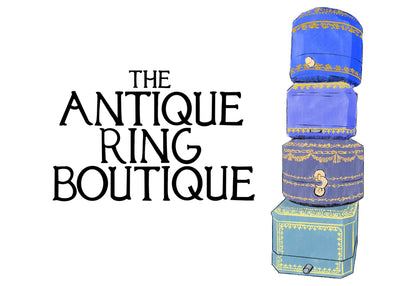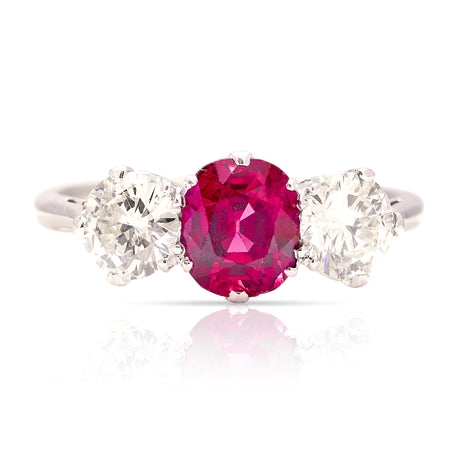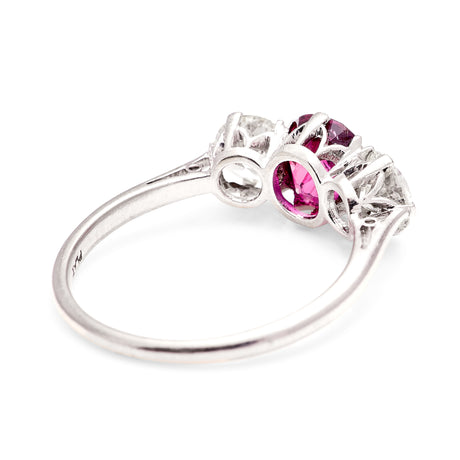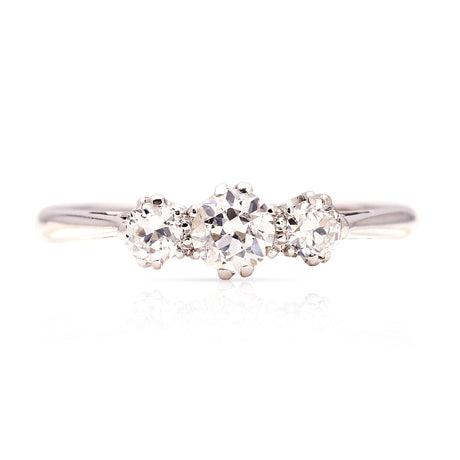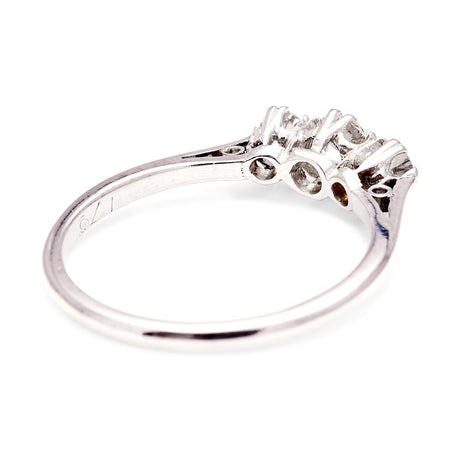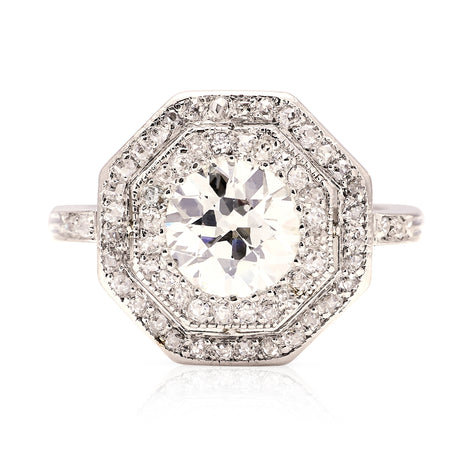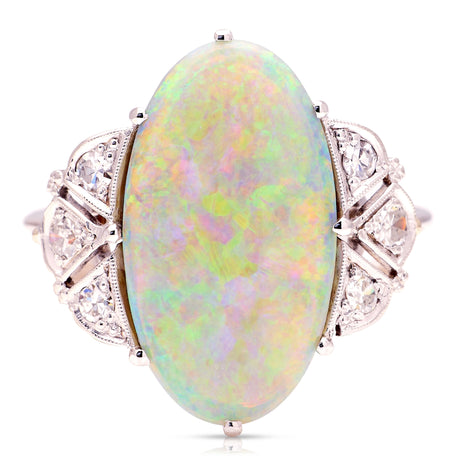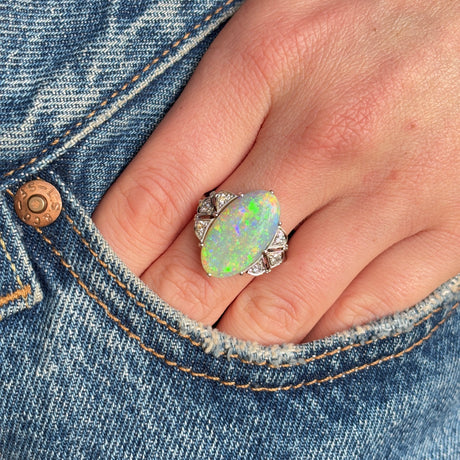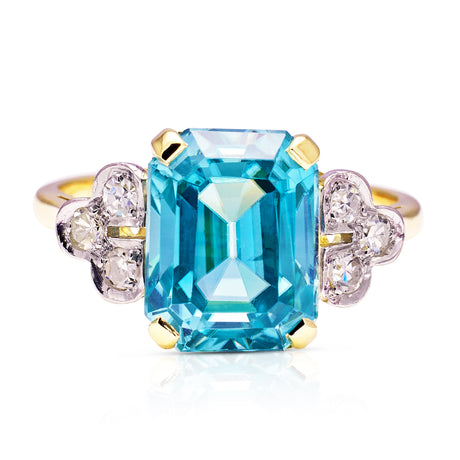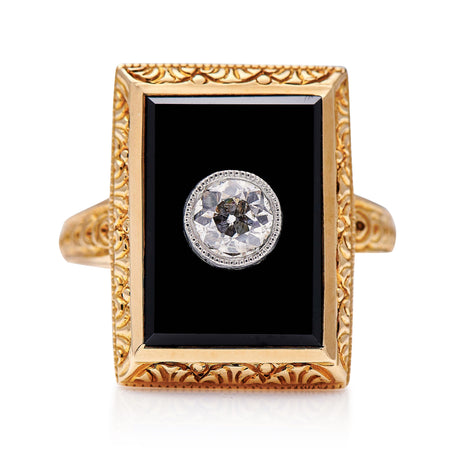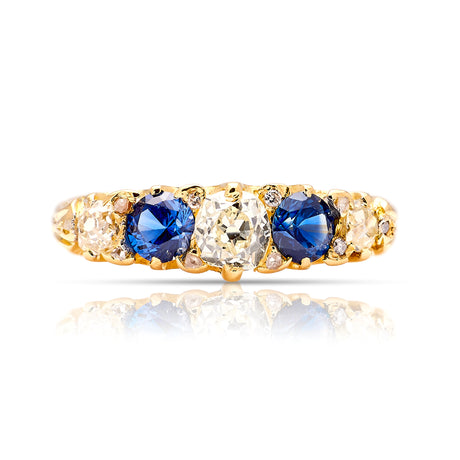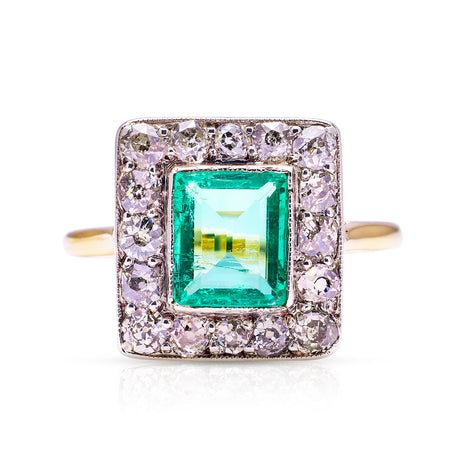Art Deco style, with its geometric elegance and opulent craftsmanship, is a nod to the 'Roaring Twenties' jazz era. Derived from the French term 'arts décoratifs,' Art Deco symbolises a rich blend of abstract design and striking patterns.

The era’s resulting Art Deco rings, highly sought-after and cherished, epitomise the burgeoning optimism of the period. Most pieces of Art Deco jewellery bring pronounced geometric forms, sparkling gemstones and bold colours. A stylish addition to any collection, buying an Art Deco ring involves an appreciation for this iconic period's influential style.
What is the Art Deco era?
The Art Deco era, spanning the 1920s to 1930s, was an era of optimism and classic style. The term "Art Deco'' comes from the "Exposition des Arts Decoratifs et Industriels Modernes" held in 1925 in Paris. This event was a celebration of the growing taste for decorative arts.
Art Deco’s inception can actually be traced back to 1915, making it the youngest of the antique eras (strictly speaking, vintage rings are 50-100 years old and antique rings 100+, so the 1920s straddle that border). Marking a departure from the nature-infused motifs of its predecessors, Art Deco embraced minimalistic designs of geometric shapes punctuated by bold, colourful gemstones.

It’s impossible to reflect upon this era without mentioning the House of Cartier. Established in Paris in 1847 by Louis Cartier, this esteemed house designed top-class jewellery with a lasting legacy. Amidst the Art Deco surge, Cartier unveiled some of the period's most iconic designs, like the Tank watch and the vibrant 'Tutti Frutti' jewellery line.
What styles were used in Art Deco rings?
Prominent in Art Deco ring designs were strong geometric designs, echoing the era's vibrant modern art - triangles, squares, and circles. Pieces featured central stones surrounded by straight-line shapes and smaller gems. Platinum was an extremely popular metal, used for its stunning looks mixed with malleability and durability, with white gold providing a cheaper alternative during the early 1930s Depression years.

For jewellers, Art Deco rings weren't just decorative but increasingly personal – often featuring hallmarks and the crafter’s name, much like an artist's signature.
Events like the 1922 discovery of King Tutankhamun's tomb influenced jewellers, with rings showcasing Egyptian symbols and motifs. Above all, the increasing precision of metalwork and jewel cutting allowed makers to arrange stones in unique and startling ways.
The use of the pavé setting was widespread in Art Deco rings. This technique uses smaller gemstones, often diamonds, dotted along the ring’s band. Often, this setting is used to accentuate a main stone while minimising the metal on show underneath.
Art Deco vs Art Nouveau
To appreciate the evolution of Art Deco, it’s best to mention its precursor, Art Nouveau. Though the two periods are often confused, they produced very different styles.
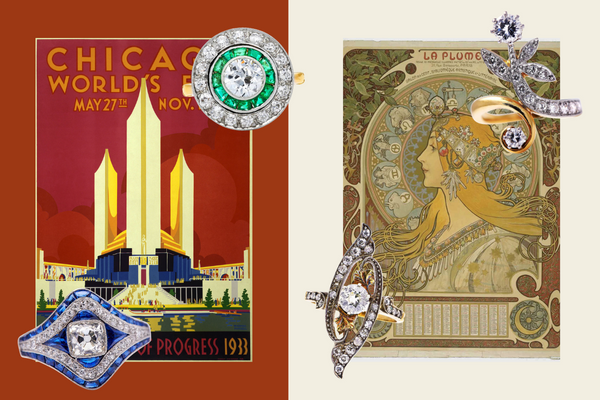
In the late 19th Century, Art Nouveau saw artists championing nature. The movement's designs, with flowing lines and soft hues, produced ornate and delicate pieces.
The aftermath of World War I ushered in an era of newfound optimism focussing on modernity and future possibilities. In contrast to Art Nouveau's motifs and muted tones, Art Deco dazzled with defined patterns, bold shapes and magnificent colour.
Art Deco’s influence carried into the following Retro era. From the late 1930s and into World War Two, Retro jewellery took the bold shapes of Art Deco and created strong, colourful statement pieces.
Why is the Art Deco era popular now?
Amid the stylish backdrop of the 'roaring twenties', Art Deco jewellery celebrated post-war optimism. Likewise, it reflected the era's surge in women's independence and greater freedom in fashion, with shorter hemlines and fewer restrictive corsets.
We can see the lasting effects of the Art Deco period in the modern world. From visual arts to architectural marvels like the Empire State Building, the Art Deco style has cast a spell across many different parts of modern life. Today's fascination with Art Deco jewellery, especially rings, reflects its enduring influence.
What cuts were used in Art Deco rings?
Emerging in the 1920s, Art Deco's embrace of modernism extended to ring designs. This era was defined by new gem-cutting techniques, with jewellers crafting some impeccable cuts. Art Deco period jewels often have pristine lines, lots of sparkle and graceful shapes. Among the popular cuts were:
- Emerald Cut: One of the vintage diamond shapes, the Emerald cut has clean, linear lines and became synonymous with the 1920s. Art Deco diamond rings’ long step-cut facets illuminate the stone's centre, creating a deep sparkling effect.
- Asscher Cut: Resembling the Emerald but more square-shaped, typically layered with 50 or 58 facets, the Asscher cut brings depth with a high crown. It gives pieces a unique, vintage charm with a similarly captivating shimmer effect. It was the first diamond cut to be patented.
- Marquise Cut: Curved with pointed ends, Marquise diamonds are named after the Marquise de Pompadour and are said to be modelled on her lips at the request of Louis XV. Often, this cut style gives stones the illusion of being bigger and bolder than others could.
- Baguette Cut: Often used as side stones, Baguette cut diamonds’ small, rectangular step-cut shapes were used to outline bolder stones. This technique was used to add a dash of Art Deco boldness to many pieces.
While Art Deco used new cuts facilitated by modern machinery, it also embraced the old. Traditional diamond cuts, designed to gleam under candlelight, are sometimes seen in Art Deco pieces, carrying old-world charm into the 20th century.
How were Art Deco rings made?
Art Deco rings of the era showcased bold, geometric motifs. They blended sharp lines to craft intricate designs. Unconventional materials like spinel, onyx, and camo were embraced and used more widely than in preceding eras. Central to these creations was a prominent stone, often a diamond, flanked by a constellation of smaller diamonds or gemstones.
Filigree and milgraining were both intricate techniques used in the Art Deco era. The former involved crafting delicate, lace-like patterns using fine threads of precious metals to add depth and texture. Milgraining brought a detailed touch by decorating the metal edges with smaller stones, highlighting ring borders.
What jewels were common?
Art Deco rings used a mix of diamonds and vividly coloured gemstones. Synthetic stones – non-organic stones made using other chemicals in a laboratory setting – also became popular, with these gemstones being cheaper but often rivalling the brilliance of their natural alternatives.
Engagement rings in the Art Deco era typically used diamonds together with jewels like sapphires, rubies and emeralds. The era also saw a surge in the popularity of other gemstones like aquamarine, pearls, coral and turquoise, celebrating both tradition and innovation in jewellery design.
What metals were common?
Platinum rings reigned supreme in the Art Deco era. It was (and still is) cherished for its strength and malleability that allowed jewellers to create intricate and lasting designs.
While Art Deco was a time of prosperity, it also saw its downturns. As the Depression era tightened in the 1930s, the more economical white and yellow gold emerged as alternatives to platinum for Art Deco jewellery. Rose gold rings, made using a blend of gold with other alloys, can sometimes be found outlining the era’s stunning gemstone combinations.
